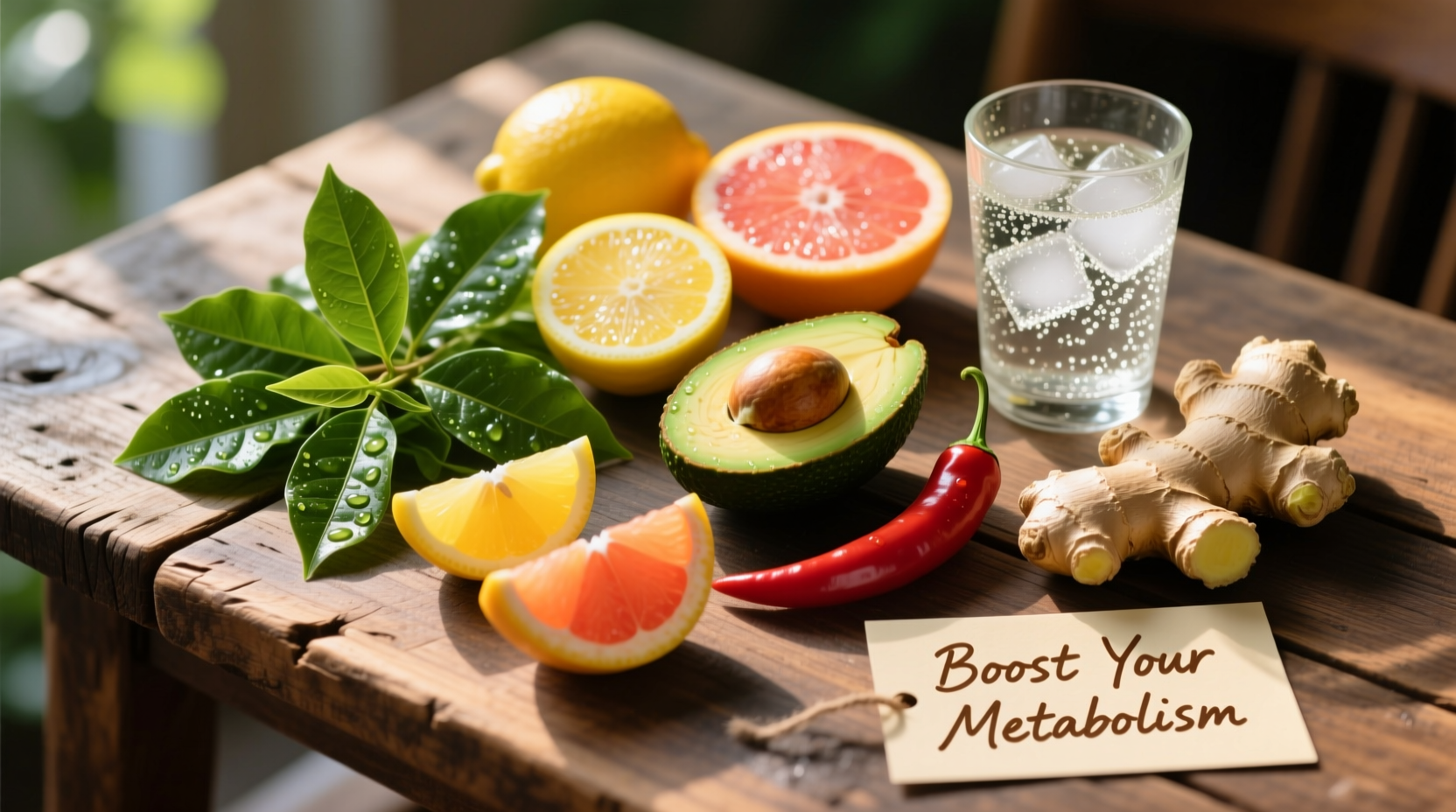The most scientifically supported metabolism-boosting foods include green tea (due to EGCG), high-protein foods (20-30% thermic effect), spicy peppers containing capsaicin, coffee (modest caffeine effect), and apple cider vinegar. These foods typically increase metabolic rate by 4-10% temporarily, not enough for significant weight loss alone but valuable as part of a comprehensive approach including proper nutrition and exercise.
Many people searching for metabolism-boosting foods hope for a magic solution to weight management. The reality is more nuanced: certain foods can provide a modest, temporary metabolic increase, but they work best as part of an overall healthy lifestyle. Understanding which foods have genuine scientific backing—and their realistic effects—can help you make informed dietary choices without falling for exaggerated claims.
Understanding Metabolism: Separating Fact from Fiction
Your metabolism represents all chemical processes that maintain life, measured as calories burned at rest (basal metabolic rate). While food can temporarily increase metabolic rate through the thermic effect of food (TEF), the impact varies significantly by food type and individual factors. Research from the National Institute of Diabetes and Digestive and Kidney Diseases shows that TEF typically accounts for only 10% of daily energy expenditure.
"Metabolism boosters" often get oversold in popular media. The American Journal of Clinical Nutrition published a comprehensive review showing that most so-called metabolism-boosting foods increase calorie burn by just 4-10% for 1-3 hours after consumption. This translates to approximately 25-50 extra calories burned per day—helpful but not transformative without other lifestyle changes.

Your Top Evidence-Based Metabolism Foods
Green Tea: The Catechin Connection
Green tea contains epigallocatechin gallate (EGCG), which appears to increase metabolic rate by 3-4% according to research in the American Journal of Clinical Nutrition. A meta-analysis of 11 studies found that green tea extract combined with caffeine increased 24-hour energy expenditure by about 100 calories. For best results, choose high-quality loose-leaf green tea consumed between meals, as adding milk may reduce catechin absorption.
High-Protein Foods: The Thermic Effect Advantage
Protein requires significantly more energy to digest than fats or carbohydrates, with a thermic effect of 20-30% compared to 5-10% for carbs and 0-3% for fats. A study published in Journal of the International Society of Sports Nutrition demonstrated that high-protein meals increased postprandial energy expenditure by 30% compared to high-carb meals. Include lean meats, fish, eggs, Greek yogurt, and legumes throughout your day for sustained metabolic benefits.
Spicy Peppers: Capsaicin's Temporary Boost
Capsaicin, the compound that makes chili peppers hot, temporarily increases metabolic rate by 5-8% for about 30 minutes after consumption. Research from Purdue University published in Physiology & Behavior showed that capsaicin consumption reduced appetite while modestly increasing energy expenditure. Incorporate cayenne pepper, jalapeños, or habaneros into meals, but note that tolerance develops quickly, diminishing the effect over time.
| Food | Mechanism | Metabolic Increase | Duration | Practical Recommendation |
|---|---|---|---|---|
| Green tea | EGCG + caffeine synergy | 3-4% | 90-120 minutes | 2-3 cups between meals daily |
| High-protein foods | High thermic effect (20-30%) | 25-30% | 2-3 hours | 25-30g protein per meal |
| Spicy peppers | Capsaicin activation | 5-8% | 20-30 minutes | 1/4-1/2 tsp cayenne per meal |
| Coffee | Caffeine stimulation | 3-4% | 60-90 minutes | 1-2 cups black coffee |
| Apple cider vinegar | Acetic acid effects | 2-3% | 30-60 minutes | 1-2 tbsp before meals |
Implementation Guide: Making It Work for You
Simply adding these foods won't transform your metabolism overnight. The key is strategic incorporation into your existing routine:
- Morning boost: Start with black coffee or green tea before breakfast to maximize the caffeine effect when cortisol levels are naturally rising
- Meal composition: Include 25-30g protein with each meal to maintain the thermic effect throughout the day
- Spice timing: Add capsaicin-containing spices to your largest meal when you'll be active for the next few hours
- Hydration synergy: Drink water with lemon before meals—studies show this combination slightly enhances the thermic effect
Context Matters: When These Foods Actually Work
Metabolism-boosting foods deliver different results depending on individual factors. Research from the Endocrine Society shows that:
- Lean individuals experience less metabolic boost from protein than those with higher body fat
- Capsaicin effects diminish significantly after 1-2 weeks of regular consumption
- Green tea's benefits are most pronounced in people who don't regularly consume caffeine
- Effects are generally more noticeable in the morning than evening due to circadian rhythms
These foods work best as part of a comprehensive approach that includes adequate sleep, stress management, and both strength training and cardiovascular exercise. The Centers for Disease Control and Prevention emphasizes that building muscle mass through resistance training provides the most significant long-term metabolic improvements.
Common Metabolism Myths Debunked
Despite popular claims, many supposed metabolism boosters lack scientific support:
- Grapefruit: Despite the grapefruit diet popularity, research in the Journal of Medicinal Food shows no significant metabolic effect beyond its low-calorie content
- "Detox" teas: Most contain laxatives that cause water loss, not metabolic increase, and can be harmful with prolonged use
- Certain supplements: Many metabolism-boosting supplements contain unsafe levels of stimulants or ingredients with no proven efficacy
Be wary of products promising dramatic metabolic increases—these often misinterpret research or cite studies using extremely high, unrealistic doses.
Realistic Expectations for Sustainable Results
The most effective approach combines metabolism-supporting foods with foundational healthy habits. A longitudinal study published in Circulation followed 120,000 adults for 20 years, finding that those who combined modest dietary improvements (including protein-rich foods and green tea) with regular exercise maintained healthier weights long-term.
Remember that individual responses vary significantly. What works well for one person might provide minimal benefit for another due to genetic factors, gut microbiome composition, and existing health conditions. Consult with a registered dietitian or healthcare provider to develop a personalized approach that considers your unique physiology and health goals.











 浙公网安备
33010002000092号
浙公网安备
33010002000092号 浙B2-20120091-4
浙B2-20120091-4